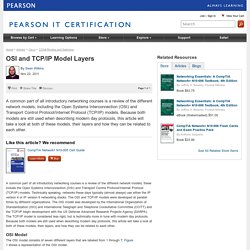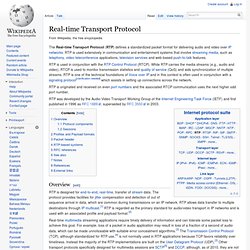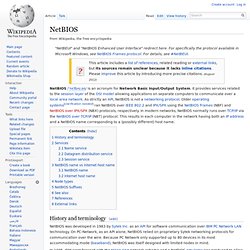

SPDY (5. OSI Session Layer) The OSI Model – What It Is; Why It Matters; Why It Doesn’t Matter. The OSI Model was created based on recommendations from the International Organization for Standardization (ISO) in 1980, which started expanding on the DoD model in the late 1970s. The current standard was published in 1996. The official title for the model is the ISO OSI (Open Systems Interconnection) Reference Model since it describes or relates to connecting systems that are open for communication with other systems. In the model, the functions of the communication system are standardized by categorizing them into abstract layers. The functions which are similar are grouped into the same layer and provide services to the layers above their existing layer. What Does the OSI Model Do? The OSI model depicts how data communications should take place.
The OSI model defines standards for: What Are the Seven Layers of the OSI Model? The OSI model is made up of seven layers which are presented as a stack. OSI and TCP/IP Model Layers. A common part of all introductory networking courses is a review of the different network models, including the Open Systems Interconnection (OSI) and Transport Control Protocol/Internet Protocol (TCP/IP) models.

Because both models are still used when describing modern day protocols, this article will take a look at both of these models, their layers and how they can be related to each other. Like this article? We recommend A common part of all introductory networking courses is a review of the different network models; these include the Open Systems Interconnection (OSI) and Transport Control Protocol/Internet Protocol (TCP/IP) models. Technically speaking, networks these days typically (almost always) use either the IP version 4 or IP version 6 networking stacks. OSI Model The OSI model consists of seven different layers that are labeled from 1 through 7; Figure 1 shows a representation of the OSI model: Real-time Transport Protocol. The Real-time Transport Protocol (RTP) defines a standardized packet format for delivering audio and video over IP networks.

RTP is used extensively in communication and entertainment systems that involve streaming media, such as telephony, video teleconference applications, television services and web-based push-to-talk features. RTP is used in conjunction with the RTP Control Protocol (RTCP). While RTP carries the media streams (e.g., audio and video), RTCP is used to monitor transmission statistics and quality of service (QoS) and aids synchronization of multiple streams. RTP is one of the technical foundations of Voice over IP and in this context is often used in conjunction with a signaling protocol[clarification needed] which assists in setting up connections across the network.
RTP is originated and received on even port numbers and the associated RTCP communication uses the next higher odd port number. Overview[edit] Protocol components[edit] Sessions[edit] Session Announcement Protocol. SAP typically uses Session Description Protocol (SDP) as the format for Real-time Transport Protocol session descriptions.

Announcement data is sent using IP multicast and User Datagram Protocol. Announcement interval[edit] The announcement interval is cooperatively modulated such that all SAP announcements in the multicast delivery scope, by default, consume 4000 bits per second. Regardless, the maximum announce interval is 300 seconds (5 minutes). Announcements automatically expire after 10 times the announcement interval or one hour, whichever is greater. Authentication, encryption and compression[edit] SAP features separate methods for authenticating and encrypting announcements. The message body may optionally be compressed using the zlib format as defined in RFC 1950. NetBIOS. "NetBEUI" and "NetBIOS Enhanced User Interface" redirect here.

For specifically the protocol available in Microsoft Windows, see NetBIOS Frames protocol. For details, see #NetBEUI. NetBIOS /ˈnɛtbʌɪ.ɒs/ is an acronym for Network Basic Input/Output System. It provides services related to the session layer of the OSI model allowing applications on separate computers to communicate over a local area network. As strictly an API, NetBIOS is not a networking protocol. History and terminology[edit] NetBIOS was developed in 1983 by Sytek Inc. as an API for software communication over IBM PC Network LAN technology. In 1985, IBM went forward with the token ring network scheme and a NetBIOS emulator was produced to allow NetBIOS-aware applications from the PC-Network era to work over this new design.
Also in 1985, Microsoft created a NetBIOS implementation for its MS-Net networking technology.
Named Pipes (File Utilities) OSI model (Networking Layers) Networking (Engineering - Communication)